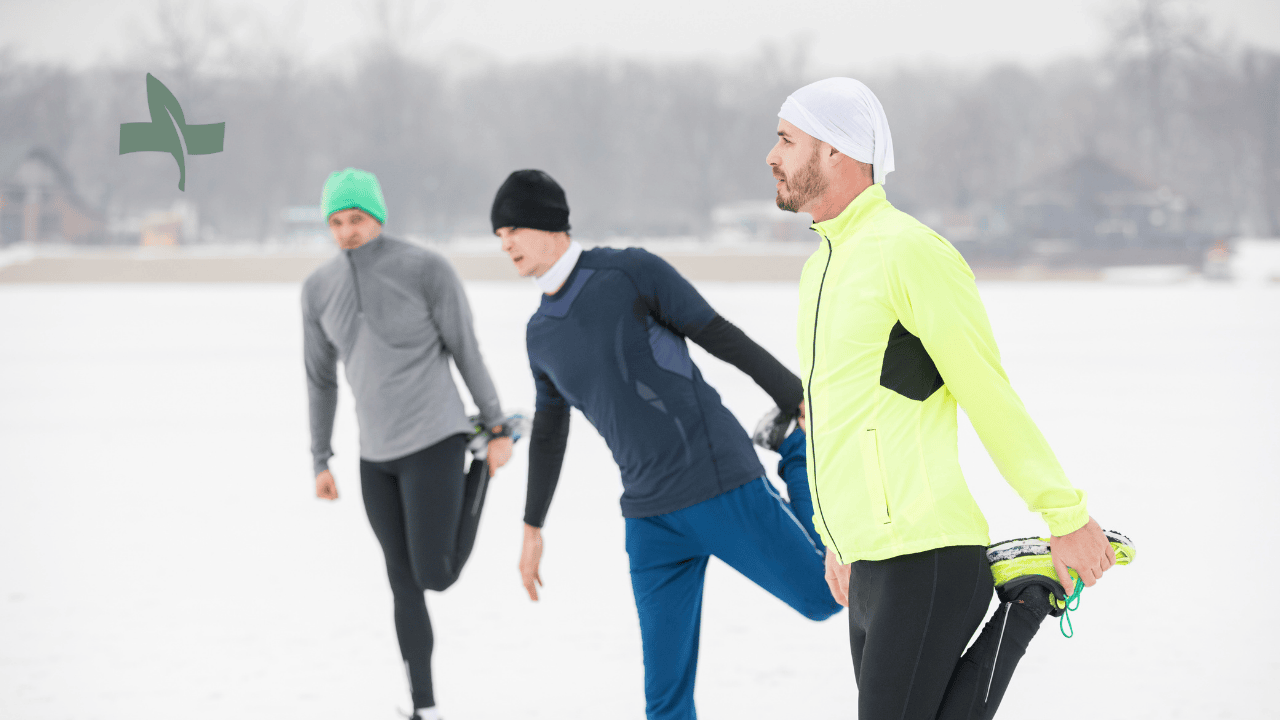Stay Healthy in Winter: A Practical Checklist
Short days, cold air, and busier schedules can make healthy habits slip. This winter wellness checklist focuses on simple, science-informed actions that fit real life at home, work, and outdoors. You will find practical winter health tips for movement, meals, sleep, stress, hydration, illness prevention, and safety so you can stay healthy in winter without overhauling your routine.
How winter affects your body
Cold air triggers vasoconstriction, which redirects warm blood toward your core. This helps conserve heat but can raise heart workload and make muscles and joints feel stiff until you warm up. A longer, gradual warm-up reduces strain and improves flexibility.
Your thirst signal drops in cold weather, even as fluid loss continues through respiration and indoor heating. The result is easy dehydration that can sap energy and worsen headaches. Treat hydration as scheduled, not thirst-driven.
Dry, heated air reduces mucosal moisture in your nose and throat. This can irritate airways, thicken mucus, and make you feel more congested. Humidifying living spaces and drinking fluids helps restore comfortable breathing.
Shorter daylight shifts your circadian rhythm. Melatonin timing changes can make you sleepy earlier yet disrupt sleep quality. Less light exposure can also affect mood; some people experience seasonal pattern depression and benefit from morning outdoor light or structured light therapy.
More time indoors increases respiratory exposure to others. Hand hygiene, cleaner indoor air, and staying home when sick lower risk. Vaccination timing also matters for flu and other winter respiratory viruses.
Your Winter Health Checklist
Move daily, even indoors
Why it helps
Regular movement supports circulation, joint lubrication, and metabolic health when cold-induced vasoconstriction and stiffness are more likely. Indoor activity also benefits mood and sleep by helping regulate stress hormones and building homeostatic sleep pressure. Short, consistent bouts are effective even if you are busy.
How to do it
Aim for a daily baseline such as 20–30 minutes of moderate movement. Break it into 3–4 mini sessions if needed.
Use low-impact options that need little space: brisk hallway walks, marching in place, step-ups on a sturdy step, stationary cycling, or yoga flow.
Warm up longer than you would in summer. Spend 5–10 minutes on gentle range of motion and light cardio before any strength or interval work.
Try a simple indoor circuit: 45 seconds each of bodyweight squats, wall push-ups, light band rows, and glute bridges. Rest 30–45 seconds and repeat for 3–5 rounds.
If you sit for work, set a timer every 60 minutes. Stand, stretch hips and chest, and do 1–2 minutes of movement snacks such as calf raises or air squats.
If you have heart, lung, joint, or balance concerns, start low and progress slowly. Stop for chest pain, marked breathlessness, dizziness, or joint pain that alters form.
Hydrate, even when you are not thirsty
Why it helps
Cold air blunts thirst, yet you still lose fluid through breathing and heated indoor air. Even mild dehydration can affect energy, focus, headache frequency, and exercise tolerance. Keeping fluids steady also supports mucus moisture in your nose and throat, which helps natural defenses work well in winter.
How to do it
Set a fluid baseline. Most adults do well aiming for pale-yellow urine. Use a refillable bottle and finish it 2–3 times through the day.
Front-load your morning. Start with a full glass of water when you wake and another with breakfast.
Count warm, non-sweet options. Plain water, unsweetened herbal tea, and broths all hydrate.
Pair fluids with routines. Drink a glass before each meal and during work breaks.
Exercise rule of thumb. Add about 250–500 mL per 30 minutes of indoor activity, adjusting for sweat and room heat.
Mind salt and alcohol. Salty snacks and alcohol can increase fluid loss. If you drink alcohol, alternate each serving with water.
If you have heart, kidney, or fluid-restricted conditions, follow your clinician’s guidance on daily totals.
Layer up and keep warm safely
Why it helps
Staying warm reduces strain on your heart and muscles, lowers injury risk, and helps you stay active comfortably. Proper clothing layers manage sweat and wind, while safe home-heating habits prevent burns, dehydration from overly dry air, and carbon-monoxide hazards.
How to do it
Use a 3-layer system outdoors.
Base: Moisture-wicking (avoid cotton) to keep skin dry.
Mid: Insulating fleece or wool to trap heat.
Shell: Wind- and water-resistant to block the elements.
Add a hat, neck gaiter, warm socks, and insulated gloves; adjust layers before you sweat.
Warm up your body, not just your coat. Do 5–10 minutes of easy movement before heading outside; keep hands and ears covered to limit heat loss.
Footwear for traction. Choose lugged soles or add ice cleats where surfaces are slick; take shorter strides and keep hands out of pockets for balance.
Heat your home safely. Keep heaters clear of anything that can burn, turn them off when sleeping or leaving, and avoid extension cords with space heaters. Never use ovens, grills, or generators indoors. Install and test smoke and carbon-monoxide alarms.
Manage dry air. If heat dries the air, use a clean humidifier per the manufacturer’s instructions. Aim for comfortable humidity to reduce nose/throat irritation and static without causing condensation or mold.
Check on vulnerable people. Older adults, infants, and those with heart or lung conditions may need warmer rooms, layered clothing, and help monitoring indoor temps.
Keep hands clean and indoor air cleaner
Why it helps
Winter brings more time indoors and closer contact with others. Clean hands reduce the spread of common respiratory viruses, and cleaner air lowers exposure to airborne particles. Pairing hygiene with ventilation and filtration gives layered protection without relying on any single step.
How to do it
Wash hands well. Use soap and water for at least 20 seconds, especially after coughing, sneezing, or public transport. Use alcohol hand rub when sinks are not available.
Target high-touch items. Disinfect phones, keyboards, doorknobs, and light switches regularly. Focus on shared items at home and work.
Improve ventilation. Open windows for short periods to create cross-breezes when outdoor air quality and temperature allow. Use kitchen and bathroom exhaust fans.
Use air filtration. Run a certified HEPA or high MERV portable purifier sized for the room. Place it near the breathing zone or center of activity and let it run during gatherings.
Host smarter. Keep groups smaller, meet outdoors when possible, or choose larger rooms. Offer tissues and hand sanitizer at the entrance.
Stay home when sick. Rest, hydrate, and follow local guidance on return-to-work or school. Seek care for severe or persistent symptoms.
Prioritize consistent sleep
Why it helps
Sleep supports immune function, hormone balance, mood, and exercise recovery. Shorter daylight can shift melatonin timing and fragment sleep, while dry indoor air and screen time reduce sleep quality. Consistent schedules and light management help keep your circadian rhythm steady through winter.
How to do it
Fix your wake time. Choose a realistic wake-up and keep it the same daily (including weekends) to anchor your body clock.
Get morning light. Within an hour of waking, spend 5–10 minutes outdoors or by a bright window to reinforce daytime alertness.
Create a wind-down buffer. Start a 30–60 minute routine before bed: dim lights, quiet tasks, light stretching, or reading.
Limit late caffeine and alcohol. Stop caffeine at least 8 hours before bedtime; alcohol can fragment sleep even if it helps you doze off.
Optimize the room. Keep it dark, quiet, and cool; use a clean humidifier if air is very dry. Reserve bed for sleep and intimacy.
Screen strategy. Avoid bright screens for 60 minutes before bed or use blue-light reduction and lower brightness if you must use devices.
If insomnia persists. Try a short, consistent wake-time reset and consider cognitive behavioral strategies for insomnia. Seek care for loud snoring, witnessed apneas, or chronic daytime sleepiness.
Plan balanced winter meals and snacks
Why it helps
Colder weather, shorter days, and indoor time can drive cravings for ultra-processed comfort foods. Building meals around protein, fiber, and healthy fats supports steady energy, immune function, and satiety so you are less tempted by frequent takeout or sugary snacks.
How to do it
Use the “3 + fiber” plate. Aim for one lean protein (fish, poultry, tofu, eggs, beans), one high-fiber carb (oats, brown rice, quinoa, potatoes with skin), one colorful produce serving, plus an added fiber source (beans, lentils, chia, flax, or leafy greens).
Batch cook warm bases. Make a pot of veggie-bean soup, turkey chili, lentil stew, or curry on weekends; portion into grab-and-go lunches to reduce weekday decisions.
Prioritize protein at breakfast. Options: Greek yogurt with berries and chia; veggie omelet with whole-grain toast; overnight oats with whey or plant protein.
Smart snacks. Pair protein + produce: apple with peanut butter, carrots with hummus, cottage cheese with pineapple, edamame, or a small handful of nuts.
Fluids with meals. Add a glass of water or unsweetened herbal tea to each meal to counter dry indoor air.
Plan for comfort. Keep a “better comfort” list: baked sweet potatoes, whole-grain pasta with olive oil and veg, air-fried salmon, or cinnamon oatmeal with walnuts.
Mind alcohol and sugar. Save sweets and drinks for intentional occasions; balance with protein and fiber to blunt blood-sugar spikes.
Manage stress and try brief digital detoxes
Why it helps
Stress often climbs in winter due to tighter schedules, less daylight, and more indoor time. Elevated stress hormones can disrupt sleep, raise blood pressure, and increase cravings. Short, repeatable stress-management routines and strategic device breaks lower arousal, improve mood, and support better sleep quality.
How to do it
Use a 60–120 second reset. Try box breathing (inhale–hold–exhale–hold for 4 counts each) or a slow head-to-toe muscle release during work breaks.
Schedule micro-recovery. Insert two 5–10 minute “no-input” blocks daily: no email, news, or social feeds. Stretch, step outside, or make tea.
Protect evenings. Set a “screens off” window 60 minutes before bed; place devices to charge outside the bedroom.
Curate notifications. Turn off nonessential alerts, batch messages, and use “Do Not Disturb” during focus times.
Choose replenishing activities. Gentle movement, reading, puzzles, journaling, or calling a friend are low-friction swaps for doomscrolling.
If mood stays low. Track basics (sleep, movement, sunlight). Persistent sadness, loss of interest, or thoughts of self-harm warrant prompt professional support.
When to contact a clinician
Knowing when to get help keeps small issues from becoming serious. Use the guideposts below and seek medical care sooner if you are older, pregnant, or have heart, lung, or immune conditions.
Seek prompt medical advice if you notice:
Fever that lasts more than 3 days, worsening cough, shortness of breath, chest pain, or oxygen saturation below your usual baseline.
Signs of dehydration such as very dark urine, dizziness on standing, confusion, or inability to keep fluids down.
Possible hypothermia after cold exposure such as intense shivering, slurred speech, clumsiness, or unusual drowsiness.
Possible frostbite such as numbness, white or grayish skin, or skin that feels waxy or hard.
Persistent low mood, loss of interest, or thoughts of self-harm. Get urgent support if safety is a concern.
For infants and older adults, consider earlier evaluation when symptoms begin.
Call emergency services for severe breathing difficulty, chest pain that does not go away, new confusion, fainting, or signs of stroke.
Takeaway
Winter wellness comes from small, consistent habits. Keep moving indoors, hydrate on a schedule, dress and heat your home safely, and pair hand hygiene with cleaner air. Protect sleep, plan simple balanced meals, and use brief stress resets during busy days.
If symptoms worsen or you have questions about vaccines, supplements, or medication changes, talk with your healthcare provider for personalized guidance.
related blogs





